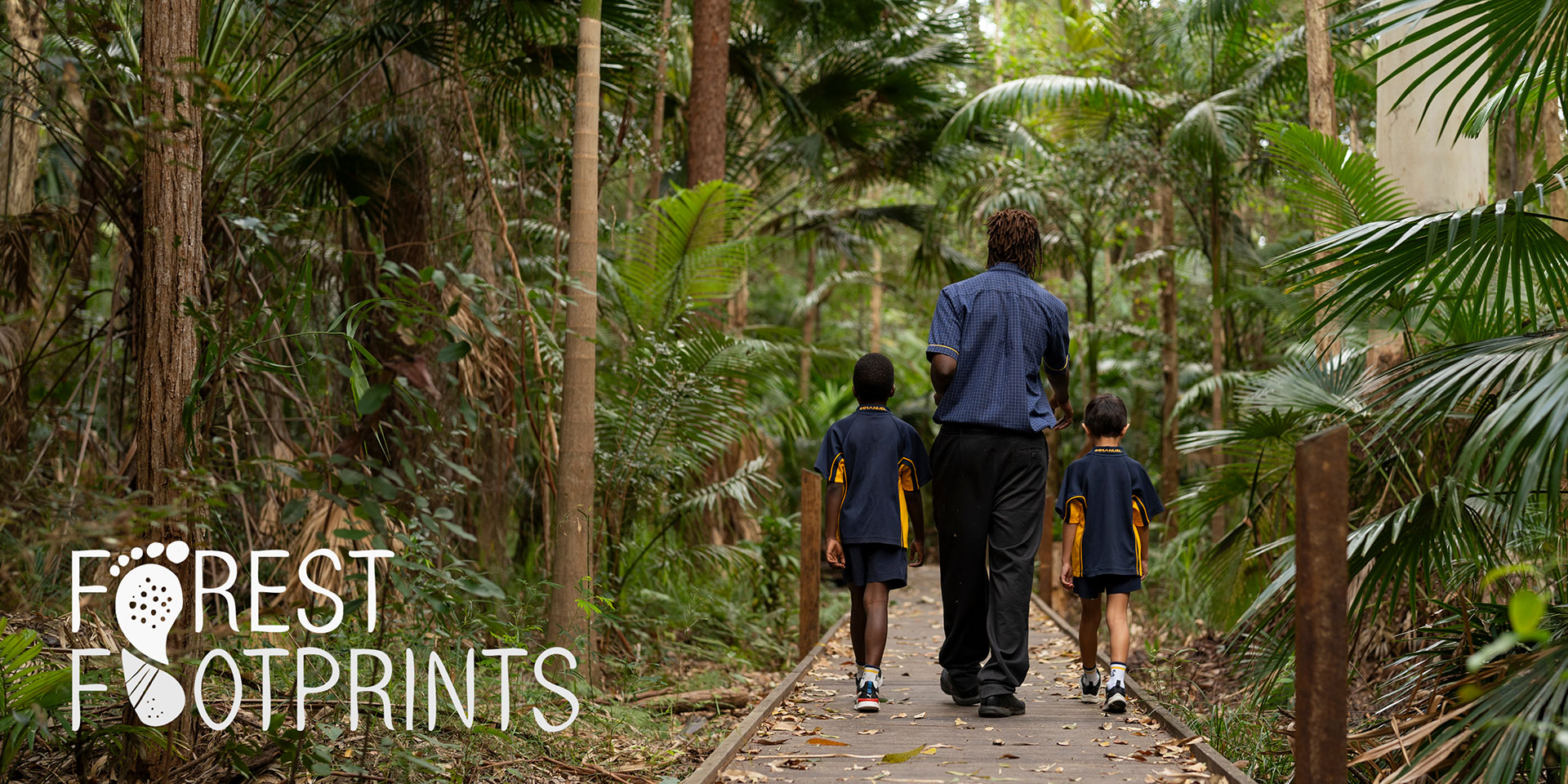Forest Footprints
A Student-Led Journey through Immanuel Lutherans College’s Forest

Immanuel Lutheran College is situated on 23 hectares of beautiful wet sclerophyll forest, on Kabi Kabi/Gubbi Gubbi Country. We are honoured to be the custodians of this incredible part of the world and recognise our responsibility to protect and preserve it.
Immanuel students and staff have developed an interactive forest path. This walk begins at our Environmental Center, weaves through our forest, and leads up to our Native Cuisine Garden. Throughout the walk, signs with QR codes can be found. When scanned, these codes link to research and photographs created by Immanuel students.
We thank Kabi Kabi elder, Dr. Beverly Hand, for assisting us with some of the plant knowledge. We invite you to explore, learn, and appreciate the unique natural heritage of our forest.
Wet sclerophyll forest is the tallest forest type in Australia. In Queensland, this kind of forest contains very tall eucalyptus trees and their relatives, with an understory of either rainforest plants or grasses. Our forest is home to notable species such as Flooded Gums, Cabbage Leaf Palms, and Picabeen Palms. Over the years, our Eco Club has been planting Richmond Birdwing Butterfly Vines to provide food for the endangered Richmond Birdwing Butterfly. We are delighted to report sightings of this magnificent butterfly and its caterpillars in our forest!
A Journey Through Time and Nature
Step into our backyard and you’ll discover something pretty special – our “Immanuel Forest Footprints” trail, where our 23-hectare wet sclerophyll forest becomes a living laboratory. Our students have turned this beautiful space into an adventure that brings together old and new – think ancient trees and QR codes!
Take a walk from our Environmental Centre to our Native Cuisine Garden, and you’ll spot QR codes that unlock secrets about our local environment. Behind each code is a story our students have researched, a photograph they’ve taken, or a discovery they’ve made. It’s their way of sharing what makes this place so special, from its rich Kabi Kabi/Gubbi Gubbi heritage to the amazing ecosystems that call it home.
It’s where yesterday meets tomorrow – where students use today’s technology to help others understand and protect this precious piece of Sunshine Coast history.
